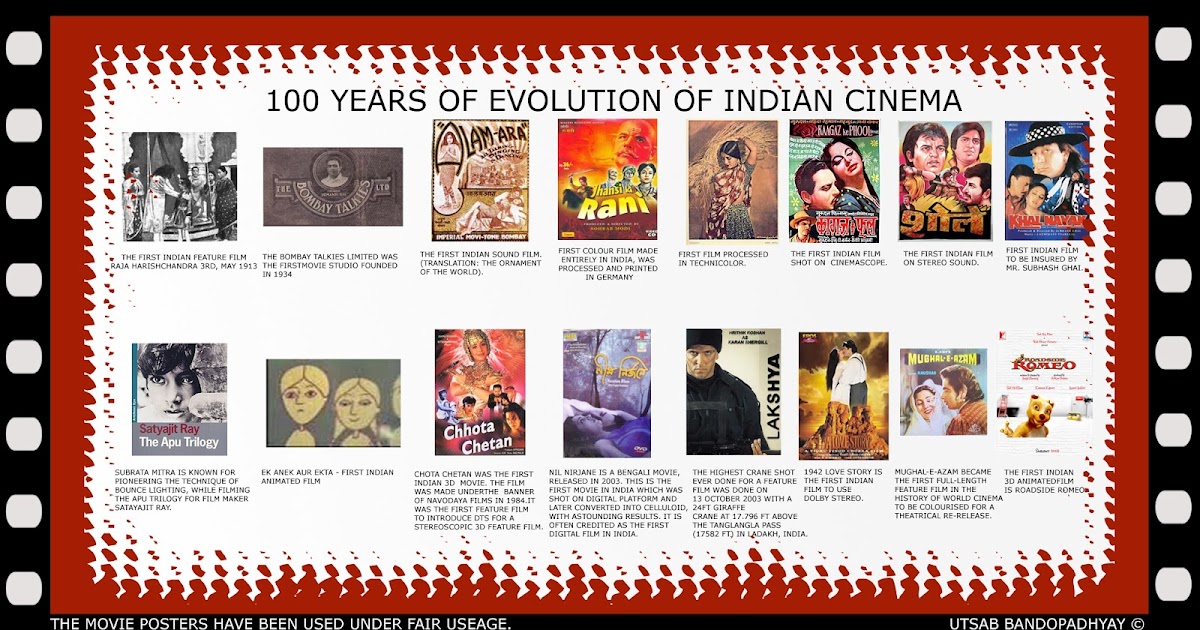Evolution of Indian Cinema: A Cinematic Odyssey Across Decades
Evolution of Indian Cinema: A Cinematic Odyssey Across Decades.

Image Source: blogspot.com
Evolution of Indian Cinema: A Cinematic Odyssey Across Decades.
The history of Indian cinema is a captivating narrative that has unfolded over the decades, mirroring the cultural, social, and technological changes in the country. This cinematic journey is marked by pioneering filmmakers, iconic actors, and a diverse range of storytelling that reflects India’s rich tapestry of traditions and modernity. In this exploration, we delve into key periods and milestones that have defined the evolution of Indian cinema.
Silent Era (1896-1930): The genesis of Indian cinema can be traced back to 1896 when Lumière Brothers introduced their films in Mumbai. However, it was in 1913 that the first full-length feature film, “Raja Harishchandra,” directed by Dadasaheb Phalke, graced the silver screen. This marked the beginning of the silent era, where filmmakers explored storytelling without the aid of synchronized sound. The period was characterized by experimentation, and notable figures like Himanshu Rai and Franz Osten collaborated on films like “Pandora’s Box” (1929).
Early Talkies and Pre-Independence Era (1930-1947): The advent of sound brought a transformative shift to Indian cinema, leading to the era of early talkies. Ardeshir Irani’s “Alam Ara” (1931) stands as a milestone, being the first Indian sound film. This period saw the emergence of regional cinema, with directors like V. Shantaram and Mehboob Khan making significant contributions. The impact of World War II influenced film themes, and the cinema of this era reflected the socio-political changes preceding India’s independence.
Golden Era (1947-1960): Post-independence, Indian cinema experienced a golden era marked by the creative brilliance of legendary filmmakers. The works of directors like Raj Kapoor, Bimal Roy, Guru Dutt, and Satyajit Ray garnered international acclaim. Films such as “Awaara” (1951), “Do Bigha Zamin” (1953), and “Pather Panchali” (1955) not only captivated audiences but also brought Indian cinema to the global stage. This period saw the birth of Bollywood and the rise of playback singing, with Lata Mangeshkar and Mohammed Rafi becoming iconic voices.
1960s-1970s: Rise of Bollywood and Parallel Cinema: The 1960s and 1970s witnessed the ascendancy of Bollywood, with actors like Rajesh Khanna and Amitabh Bachchan achieving unprecedented stardom. Mainstream cinema thrived, offering a mix of romance, drama, and action. Simultaneously, the era saw the emergence of Parallel Cinema, a movement led by filmmakers like Shyam Benegal, Govind Nihalani, and Mrinal Sen. These directors explored socially relevant themes and experimented with narrative structures, contributing to the diversification of Indian cinema.
1980s-1990s: Commercialization and Global Recognition: The 1980s marked the commercialization of Indian cinema, with the introduction of action-packed and masala films. The industry expanded its global reach, and Indian films started receiving recognition at international film festivals. Filmmakers like Satyajit Ray, Mira Nair, and Shekhar Kapur gained international acclaim, bringing Indian storytelling to a broader audience. This period witnessed the convergence of traditional storytelling with global influences, creating a unique cinematic identity.
2000s Onwards: New Wave and Global Influence: The 21st century ushered in a new wave of filmmaking, with directors like Anurag Kashyap, Vishal Bhardwaj, and Dibakar Banerjee pushing creative boundaries. This era saw a blend of artistic and commercial success, as Indian films gained recognition at prestigious international festivals. Actors like Aishwarya Rai, Priyanka Chopra, and Irrfan Khan made significant strides on the global stage, contributing to the international appeal of Indian cinema.
Contemporary Era (2010s-2020s): The contemporary era of Indian cinema presents a dynamic landscape characterized by a mix of commercial blockbusters and critically acclaimed films. The advent of streaming platforms has revolutionized film distribution, providing a platform for diverse storytelling. Films like “Baahubali” (2015), “Dangal” (2016), and “Gully Boy” (2019) have achieved both commercial success and critical acclaim, showcasing the evolving tastes of audiences.
As Indian cinema moves forward, it embraces diversity, technology, and global collaboration. The industry continues to explore a myriad of genres and themes, reflecting the country’s cultural heterogeneity. The journey of Indian cinema is not just a narrative of filmic achievements but also a testament to the resilience and creativity of a nation that cherishes its cinematic heritage.
In conclusion, the evolution of Indian cinema is a testament to its enduring legacy. From the silent era to the digital age, each period has contributed to the vibrant tapestry of Indian storytelling. As the journey continues, Indian cinema remains a dynamic force, capturing hearts not only within the country but across borders, making it an integral part of the global cinematic landscape.
Evolution of Indian Cinema: A Cinematic Odyssey Across Decades.
Author: Harendra Kukna

Leave a comment